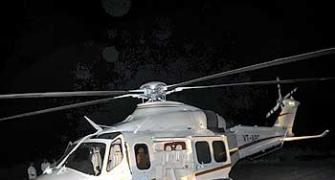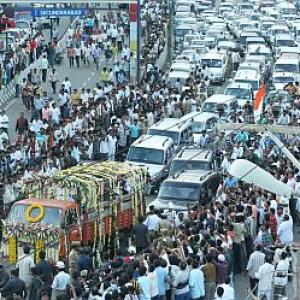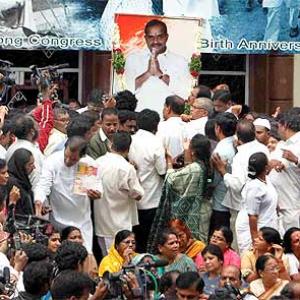The exact reason for Weednesday's crash that killed Andhra Pradesh Chief Minister Y Rajasekhara Reddy and four others could lie in the black box if it has survived the accident and can be found.
The black box, which is orange in colour, is located in the tail of a helicopter, away from the fuel-holding part of the aircraft.
Investigations later may reveal the cause of the accident, but initial reasons why the Emergency Location Transmitter did not transmit any signal could either be because the ELT, which emits signals on impact, could have burnt out in the crash. The other likely reason could be that the ELT malfunctioned due to a technical problem.
Though a helicopter can fly in bad weather, if it is caught in clouds, heavy rain and strong winds in a mountainous terrain, it risks the danger of going out of control. The absence of a visual reference can also lead to disorientation.
An aircraft can also go out of control when its instruments start misbehaving --pressure, speed, rate of climb etc.
If the rotor hits a hill or a tree, the helicopter -- which could be carrying above 2,000 litres of fuel with the engine running at very high RPM -- explodes and disintegrates.
At an average a helicopter can fly up to 400 to 500 kms at a stretch. Though it can climb up to much higher altitudes, it flies at an average altitude of 2,000 to 3,000 feet to maintain visual ground contact.









